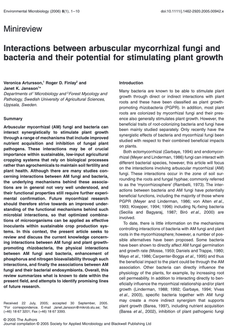
Biofertilizers
An alternative to traditional synthetic fertilizers (often composed of nitrogen, phosphorus, and potassium - key nutrients for plant life), which employs the use of microbial species to increase the uptake of these macronutrients. Microbial species that are most common among research articles are often eukaryotic and photosynthetic in nature (e.g., microalgae), or bacterial and part of the plant microbiome in the rhizosphere of the soil, aiding in plant defense and growth.
What is a Biofertilizer?
What is the environmental impact of traditional fertilizers?
Water Toxicity & Eutrophication
Run-off from nitrogen-based synthetic fertilizers into surrounding water systems interrupts nutrient concentrations, causing harmful impacts such as overgrowth of algae. This disruption of aquatic ecosystems from water-soluble nitrate is known as eutrophication (Lazewski 2024). Overgrowth of algae can impede the aquatic life of these water bodies, resulting in hypoxia. As the algae consume the majority of the oxygen stores, aquatic life in all its forms (both plants and animals) tends to die out over time (Lazewski 2024). Synthetic fertilizers may also leach nitrate into groundwater sources, leading to contamination of drinking water (Savci 2012).
Soil Degradation
Soil degradation is often overlooked as a negative impact of synthetic fertilizers due to the buffering capacity of the soil itself; However, continuous overuse of fertilizers overcomes this and thus acidifies the soil and decreases its fertility (Sacvi 2012). Nitrogen-based fertilizers are shown to decrease soil pH, reducing biomass within the soil. The capacity for the soil to carry beneficial organic matter (like rhizospheral bacteria) is reduced, and plants within this acidified soil no longer have the benefit of plant defenses due to the reduction of their root microbiome, limiting their growth (Lazewski 2024).
Human Health
Inorganic chemical fertilizers can leach into groundwater systems, thus increasing the nitrate concentration of drinking water. This increase in nitrate concentrations within the body has lasting impacts, especially on the digestive and urinary systems tasked with absorbing and filtering out this excess nitrate (Jote 2023). Nitrate concentrations have an even more dire impact on infants, as nitrate limits the function of hemoglobin to transport oxygen through the body. Aside from nitrates, other common elements found in synthetic fertilizers, like aluminium, calcium, and cobalt, have been linked to higher disease prevalence, relating to Asthma, Alzheimer's, neurological toxicity, and lung damage (Jote 2023).
Air Pollution
Synthetic fertilizers contribute greatly to greenhouse gas emissions through both their production and use. The production of these fertilizers relies on the Haber-Bosch process, which increases the concentration of atmospheric carbon dioxide, having significant downstream effects on the greenhouse effect and subsequent climate change (Sabina 2025). The application of synthetic fertilizers relates to an increase in the release of nitrous oxide in the atmosphere through bacterial soil denitrification processes that occur when there is an excess of fertilizer added. Nitrous oxide is a powerful greenhouse gas that also relates to the downstream implications of climate change (Sabina 2025).

“Excess fertilizer applied to crops and fields make agriculture one of the largest sources of nitrogen and phosphorus pollution in the country.”
U.S. Enviornmental Protection Agency
Biofertilizer Mighty Microbes
B. subtilis is a common component of plant microbiomes, existing in symbiosis to promote plant growth and prevent pathogenic infection of the plant through the release of secondary metabolites (Aharoni 2024).
Biofertilizers containing Bacillus subtilis have been shown to increase crop efficiency by reducing the loss of nitrogen from soils, allowing plants to effectively absorb this nitrogen as a macronutrient (Bao 2020). Reducing the loss of nitrogen from soils through the use of B. subtilis biofertilizers combats the negative impact of chemical synthetic fertilizers on nitrous oxide release that contributes to greenhouse gas emissions (Bao 2020). Biofertilizers containing B. subtilus have also been proven to improve both crop yield and quality on a commercial scale (Liu 2021).

Bacillus subtilis
Increased crop yield, decreased nitrous oxide emissions
Microalgae are single-celled eukaryotic microbes that have been shown to assist in nutrient cycling within plants, working to make macronutrients readily available for plant utilization. Assimilation of nutrients isn't the only use for microalgae-based biofertilizers; they also function to release organic compounds into the soil, improving the existing bacterial microbiome of root systems (Fernandes 2023). When coupled with the bacterial microbiome of the rhizosphere, microalgae stimulate soil fertility and plant growth by encouraging microbial activity (Ajeng 2024). This successfully adds to the biomass of the soil, increasing its ability to hold water and improving crop yield and quality (Fernandes 2023). Biofertilizer containing microalgae has also been proven to mitigate the impact of climate change through sequestration of agricultural carbon dioxide emissions through photosynthesis (Cao 2023).

Microalgae
Improved soil quality, decreased carbon dioxide emissions
Pseudomonas fluorescens
Pseudomonas fluorescens is another bacterial species that is associated with the root microbiome of the rhizosphere. Similar to Bascillus species, P. fluorescens works to protect the plant from infection and promote plant growth through the accumulation of macronutrients with secondary metabolites (Basail-Perez 2021). Pseudomonas fluorescens differs from other rhizospheral bacteria in that it assists in establishing symbiotic mycorrhizae species to plant roots (Basail-Perez 2021). The establishment of mycorrhizal fungi works to stimulate plant growth through the acquisition of macronutrients to the soil surrounding plant roots (Artursson 2005). P. fluourscens also differs in its unique ability to preferentially acquire phosphorus as a macronutrient, which is known to be a limiting factor in plant growth as it is often not readily available within soils (Barin 2022). P. fluourscens may also function to acquire harmful toxins and pollutants residing in the soil, which may have an impact on human health if left unmediated (Khoshru 2024).
.jpeg)











